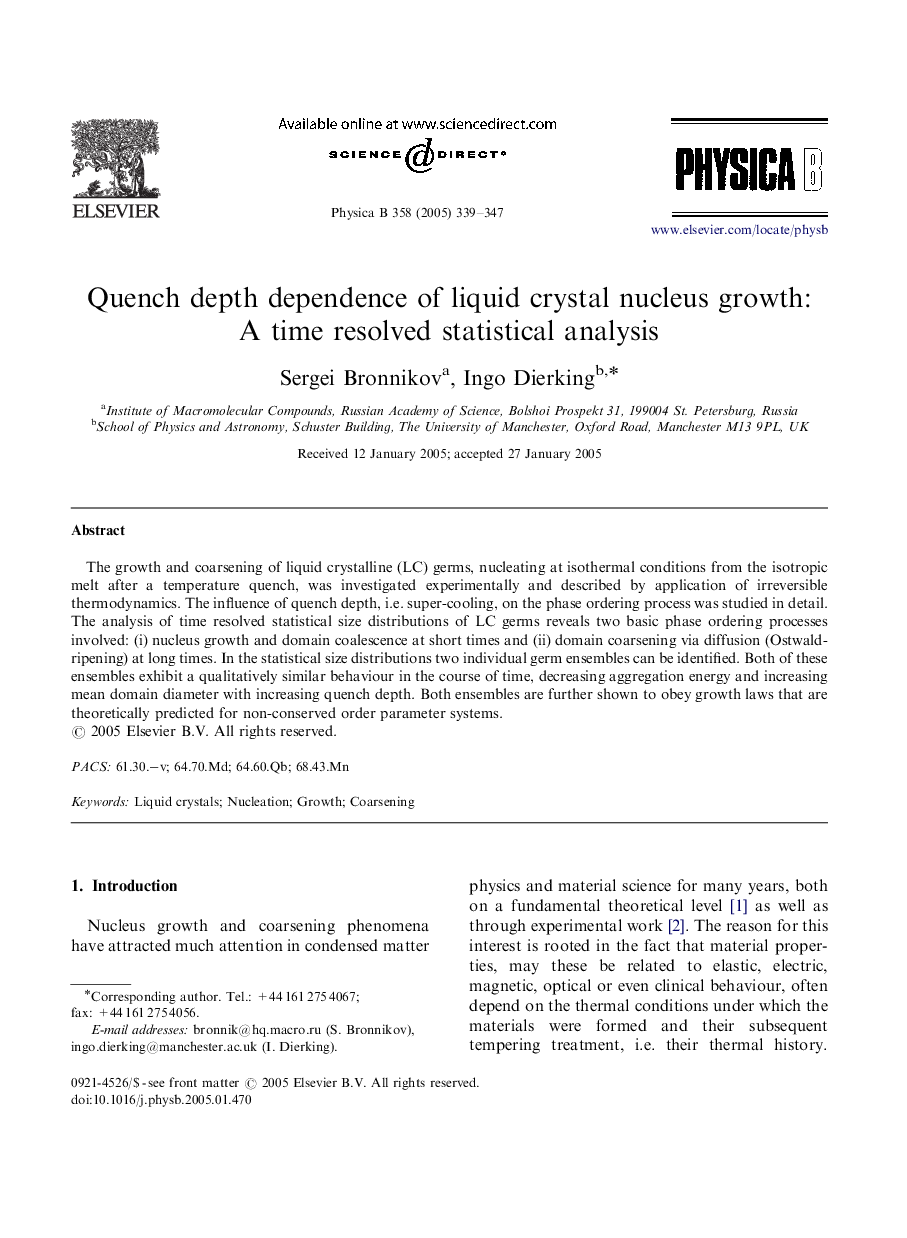| Article ID | Journal | Published Year | Pages | File Type |
|---|---|---|---|---|
| 9837795 | Physica B: Condensed Matter | 2005 | 9 Pages |
Abstract
The growth and coarsening of liquid crystalline (LC) germs, nucleating at isothermal conditions from the isotropic melt after a temperature quench, was investigated experimentally and described by application of irreversible thermodynamics. The influence of quench depth, i.e. super-cooling, on the phase ordering process was studied in detail. The analysis of time resolved statistical size distributions of LC germs reveals two basic phase ordering processes involved: (i) nucleus growth and domain coalescence at short times and (ii) domain coarsening via diffusion (Ostwald-ripening) at long times. In the statistical size distributions two individual germ ensembles can be identified. Both of these ensembles exhibit a qualitatively similar behaviour in the course of time, decreasing aggregation energy and increasing mean domain diameter with increasing quench depth. Both ensembles are further shown to obey growth laws that are theoretically predicted for non-conserved order parameter systems.
Related Topics
Physical Sciences and Engineering
Physics and Astronomy
Condensed Matter Physics
Authors
Sergei Bronnikov, Ingo Dierking,
